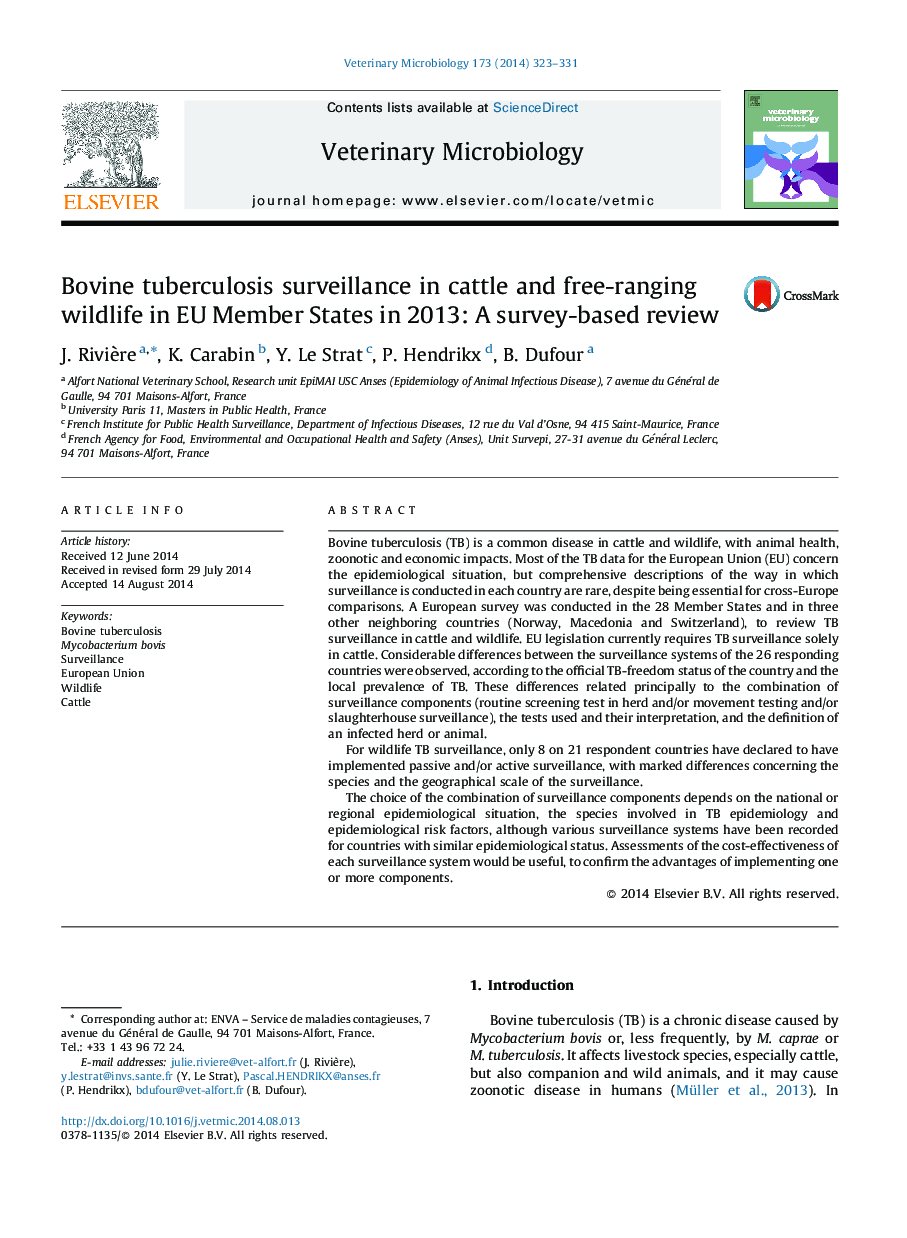| کد مقاله | کد نشریه | سال انتشار | مقاله انگلیسی | نسخه تمام متن |
|---|---|---|---|---|
| 5800248 | 1555357 | 2014 | 9 صفحه PDF | دانلود رایگان |
- Results of a European survey about bTB surveillance in cattle and wildlife are presented.
- Surveillance systems between EU Member States are variable.
- The official country status does not explain alone the surveillance heterogeneity.
- Some countries have implemented surveillance in wildlife, with various type of surveillance.
Bovine tuberculosis (TB) is a common disease in cattle and wildlife, with animal health, zoonotic and economic impacts. Most of the TB data for the European Union (EU) concern the epidemiological situation, but comprehensive descriptions of the way in which surveillance is conducted in each country are rare, despite being essential for cross-Europe comparisons. A European survey was conducted in the 28 Member States and in three other neighboring countries (Norway, Macedonia and Switzerland), to review TB surveillance in cattle and wildlife. EU legislation currently requires TB surveillance solely in cattle. Considerable differences between the surveillance systems of the 26 responding countries were observed, according to the official TB-freedom status of the country and the local prevalence of TB. These differences related principally to the combination of surveillance components (routine screening test in herd and/or movement testing and/or slaughterhouse surveillance), the tests used and their interpretation, and the definition of an infected herd or animal.For wildlife TB surveillance, only 8 on 21 respondent countries have declared to have implemented passive and/or active surveillance, with marked differences concerning the species and the geographical scale of the surveillance.The choice of the combination of surveillance components depends on the national or regional epidemiological situation, the species involved in TB epidemiology and epidemiological risk factors, although various surveillance systems have been recorded for countries with similar epidemiological status. Assessments of the cost-effectiveness of each surveillance system would be useful, to confirm the advantages of implementing one or more components.
Journal: Veterinary Microbiology - Volume 173, Issues 3â4, 10 October 2014, Pages 323-331
